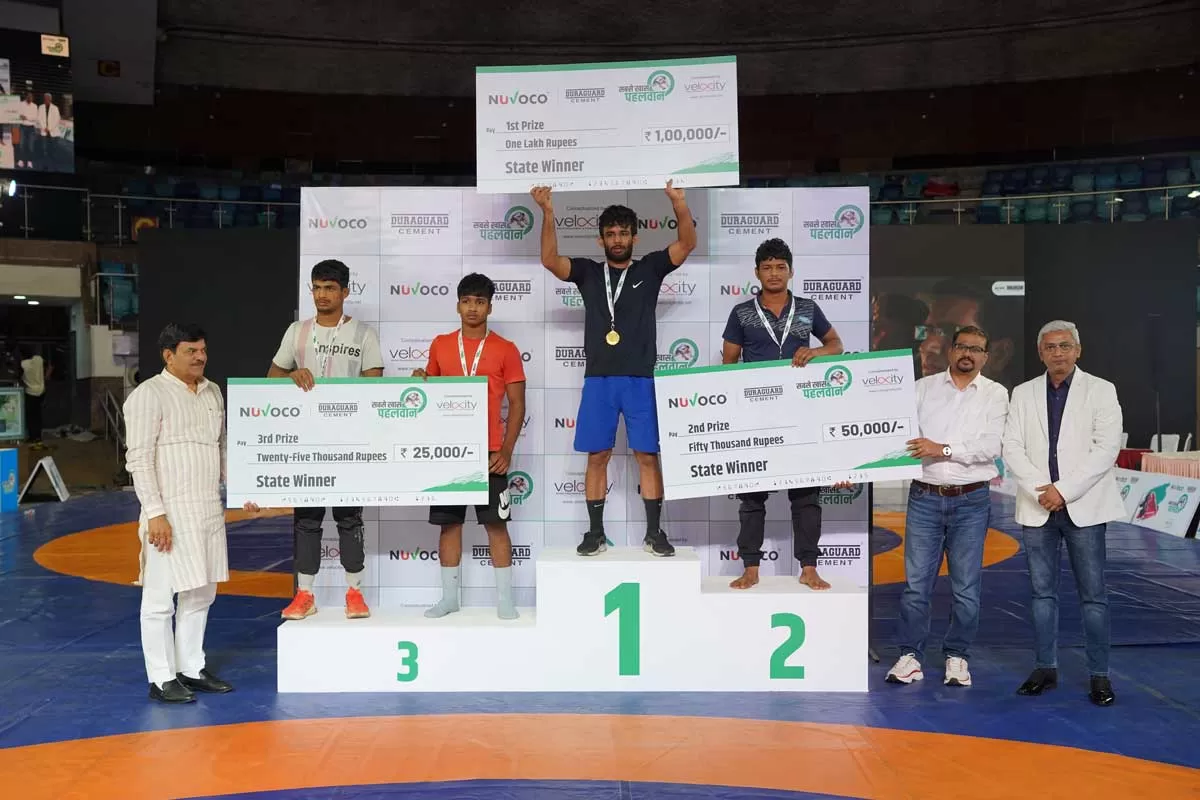The long road to connectivityIndia proposes to expand access-controlled highways by 12x to 50,000 km from the current 4,000 kmAllocation for road construction increased from Rs.0.31 trillion in FY2014 to Rs.2.72 trillion in FY2025Delay in approval for the revised cost of Bharatmala Pariyojana may hurt contract awardsImpediments in land acquisition continue to impact timely project implementationThe country is gradually shifting its focus to BOT-Toll projectsThe government has set a target of increasing the length of the national highways to nearly 200,000 km by 2037 from 146,145 km in 2024 and simultaneously increasing the length of the access-controlled highway by more than 12 times to 50,000 km from the current 4,000 km. With the land acquisition underway for future lane expansions, the majority of greenfield highways are planned as four-, six-or eight-lane roads. Further, the Ministry of Road Transport & Highways (MoRTH) has taken forward the road execution process through various initiatives such as project awards through widely accepted models, including the Hybrid Annuity Model (HAM) or Engineering, Procurement, and Construction (EPC), higher budgetary allocation, resolution of Right of Way (RoW) issues, and approvals for faster on-ground execution.MoRTH allocation has increased from Rs.0.31 trillion in FY2014 to Rs.2.72 trillion in FY2025 BE (CAGR growth of 22 per cent), signifying the central government’s focus on road development. From FY2015 to FY2024, the Ministry has constructed more than 95,000 km of roads, a combination of both greenfield and brownfield expansions. In terms of lane kilometres, the lengths of the national highways have increased by a higher proportion of 93 per cent during the above period compared to a 60 per cent increase in the highway length in kilometres.At above 45,000 km as of March 2024, MoRTH’s project award pipeline is healthy. This is despite the awarding being significantly impacted in FY2024 amid the delay in approval from the union cabinet for the revised cost estimates for the first phase of Bharatmala Pariyojana (BMP). Consequently, the overall awards declined by 31 per cent to 8,551 km in FY2024 from 12,375 km in FY2023. The MoRTH awards are expected to grow by 17-20 per cent to 10,000–10,500 km in FY2025 from 8,581 km in FY2024, with the revival in the awarding activity, post the 2024 General Elections. However, this will likely be lower than FY2023 due to muted awarding activity in Q1 FY2025. Thus, timely union cabinet approval for the revised cost of BMP remains crucial, with any delays in approvals impacting project awarding activity in FY2025.A tough road ahead Delay in land acquisition is one of the major factors adversely affecting the timely implementation of highway projects in the country. Further, the cost of land acquisition has increased significantly after the amendments to the Land Acquisition Act in 2013. As per MoRTH, the average cost of land acquisition was about Rs.8 million per hectare before January 1, 2015, which went to about Rs.36 million per hectare as of December 2018, and has further escalated in recent years. Over the past five years (around FY2019-24), the National Highways Authority of India (NHAI) has spent Rs.1.67 trillion on land acquisition compared to Rs.810 billion during FY2015-18.The roads and highways sector has attracted many developers, with competition intensifying further in the last three years. This is reflected in several projects awarded at a significant discount to the authority’s base price. Given the sizeable discounts on the bids awarded by the authority, the contractors’ ability to execute these projects within the budget and on time remains critical. Further, the ability of the contractors to bring in equity and finalise the required debt for the development projects under HAM remains crucial for the timely implementation of the projects.Alternate routes and modes of transport pose a significant threat in terms of traffic shifting from the existing routes to new routes or modes of transportation. The development of greenfield highways and expressways focused on the shortest path between the origin and destination, is transforming the road network in the country and is likely to compete with the old network of roads. Further, alternate modes of transport including the dedicated freight corridors (DFCs) and a regional rapid transport system (RRTS) are expected to threaten the existing road network.Bankrolling the roads sectorThe total bank credit to the road sector stood at Rs.3.31 trillion as of April 2024 (compared to Rs.1.8 trillion as of April 2017). The credit recorded a CAGR of nearly 8 per cent during FY2017-23 to witness a further 6 per cent YoY growth in FY2024. A sustained improvement in bank credit to the sector is expected in the medium term due to several under-construction projects relying on bank financing. In recent years, infrastructure investment trusts (InvITs) have also helped unlock capital from infrastructure assets for developers, providing much-needed equity capital for future infrastructure projects.A draft note released by the Reserve Bank of India (RBI) on May 3, 2024, has outlined the prudential guidelines to be followed for restructuring exposures relating to ‘projects under implementation’ on account of the change in the date of commencement of commercial operations (DCCO). The guidelines outline a moratorium period of six months from DCCO and the repayment tenor, including the moratorium not exceeding 85 per cent of the project’s economic life among others. The proposed guidelines will likely impact project financing adversely, especially for HAM infrastructure projects. For a HAM road project of the NHAI, the annuity becomes due for payment after 180 days of the DCCO and the authority (NHAI) has 15 days to make the annuity payment as per the concession agreement. To address these timelines, the HAM project sanctions have a seven-month or higher repayment moratorium from the DCCO, providing a cushion of more than one month in case of administrative delays in annuity receipt, if any. However, the proposed RBI regulations will have practical challenges in implementation as the maximum moratorium period allowed is six months, thereby providing no headroom in case of delays in the annuity receipt.Further, the operational period for a HAM project is 15 years and sanctions have 13.5-14 years as a repayment period, which translates to the repayment tenor at above 90 per cent of the project’s economic life. The revised regulations specify that the repayment tenor, including the moratorium period, must not exceed 85 per cent of the project’s economic life and would require revision in sanction terms for new HAM projects to align with the modified regulations. Given the compressed timelines for repayment, it is likely to increase the equity requirements for the developers to maintain a similar credit profile.To-do list Of the total awards by the MoRTH over the last three years, the EPC remained the preferred route and constituted more than 70 per cent, whereas HAM accounted for around 25-30 per cent. While EPC is likely to remain the preferred route for the road awards, the ministry is gradually shifting its focus to Build-Operate-Transfer (BOT)-Toll projects, pending the union cabinet approval for the revised cost of BMP. The NHAI has targeted 15 BOT Rs.440 billion road project awards covering about 900 km in FY2025. Further, the recent changes in the model concession agreement in capacity augmentation for BOT-TOLL projects is a positive development from a concessionaires’ perspective. ICRA expects the BOT-Toll awards share to increase to around 10 per cent in FY2025 compared to less than 5 per cent of the orders in the last five years. The NHAI raised a total of Rs.423.34 billion through monetisation of an aggregate length of 2,285 km via the Toll, Operate, Transfer (TOT) model. Further, NHAI has realised Rs.258.24 billion through monetisation of 1,525 km under the InvIT mode. In April 2024, the NHAI released an indicative list of 33 road assets it plans to monetise in FY2025 through the TOT or InvIT mix. ICRA estimates a monetisation potential of `530- 600 billion from the sale of these road assets.About the author:Vinay Kumar G is the Sector Head & Vice President and looks after the Construction and Transportation Infrastructure sectors at the rating agency ICRA.

















